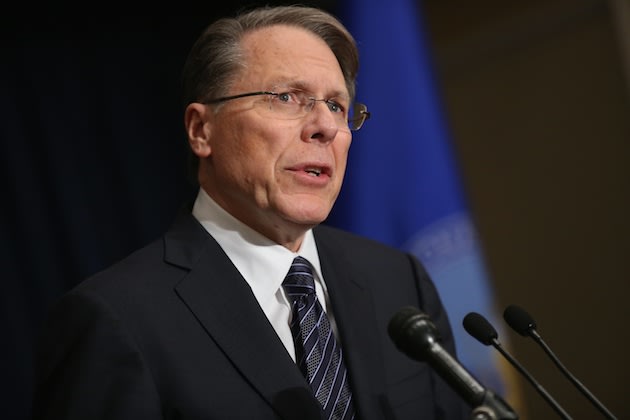PYONGYANG, North Korea (AP) — North Korea said Friday that an American citizen has been detained after confessing to unspecified crimes, confirming news reports about his arrest at a time when Pyongyang is facing criticism from Washington for launching a long-range rocket last week.
The American was identified as Pae Jun Ho in a brief dispatch issued by the state-run Korean Central News Agency in Pyongyang. News reports in the U.S. and South Korea said Pae is known in his home state of Washington as Kenneth Bae, a 44-year-old tour operator of Korean descent.
An expert said he is likely to become a bargaining chip for the North, an attempt to draw the U.S. into talks. Five other Americans known to have been detained in North Korea since 2009 were all eventually released.
North Korean state media said Pae arrived in the far northeastern city of Rajin on Nov. 3 as part of a tour.
Rajin is part of a special economic zone not far from Yanji, China, that has sought to draw foreign investors and tourists over the past year. Yanji, home to many ethnic Korean Chinese, also serves as a base for Christian groups that shelter North Korean defectors.
"In the process of investigation, evidence proving that he committed a crime against (North Korea) was revealed. He admitted his crime," the KCNA dispatch said.
The North said the crimes were "proven through evidence" but did not elaborate.
KCNA said consular officials from the Swedish Embassy in Pyongyang visited Pae on Friday. Sweden represents the United States in diplomatic affairs in North Korea since Washington and Pyongyang do not have diplomatic relations.
Karl-Olof Andersson, Sweden's ambassador to North Korea, told The Associated Press he could not comment on the case and referred the matter to the U.S. State Department.
The State Department was not immediately able to provide any additional information about the report.
The operator of a Korean language website for the Korean community in the Northwest, Chong Tae Kim of JoySeattle.com, said the detainee's father lives in Korea and his mother lives in Lynnwood, Washington.
"She hopes the State Department and Swedish Embassy help with his release," he said Friday. "She's trying not to speak to reporters, fearing that could affect her son's release."
The office of U.S. Rep. Suzan DelBene says it has reached out to the mother and is pressing the State Department for information.
"We are very concerned about it and seeing what can be done on our end to help with this," said spokesman Viet Shelton.
State Department spokesman Patrick Ventrell on Friday would only say that they were aware of the detention and that Swedish Embassy in Pyongyang is providing consular services.
"We can, indeed, confirm that a U.S. citizen has been detained in North Korea," Ventrell said, adding that he could not say more because of privacy restrictions.
In Seoul, the Segye Ilbo newspaper reported last week that Bae had been taking tourists on a five-day trip to the North when he was arrested. The newspaper cited unidentified sources.
News of the arrest comes as North Korea is celebrating the launch of a satellite into space on Dec. 12, in defiance of calls by the U.S. and others to cancel a liftoff widely seen as an illicit test of ballistic missile technology.
The announcement of the American's detainment could be a signal from the North that it wants dialogue with the United States, said Cheong Seong-chang, an analyst at the private Sejong Institute in South Korea. He said trips by former U.S. Presidents Bill Clinton and Jimmy Carter to North Korea to secure the release of other detained Americans created a mood for U.S.-North Korea talks.
"North Korea knows sanctions will follow its rocket launch. But in the long run, it needs an excuse to reopen talks after the political atmosphere moves past sanctions," Cheong said.
Cheong said he expects that the American will be tried and convicted in coming months. North Korean leader Kim Jong Un has the power to grant amnesty and will exercise it as a bargaining chip, Cheong said.
Nuland said earlier this week that Washington had been trying to reach out to Kim.
"Instead, that was met not only with an abrogation of agreements that had been made by the previous North Korean regime, but by missile activity both in April and in December," she told reporters.
She said Washington had no choice but to put pressure on Pyongyang, and was discussing with its allies how to "further isolate" the regime.
In April 2009, a North Korean rocket launch took place while two American journalists, Laura Ling and Euna Lee, were in North Korean custody after allegedly trying to sneak into the country across the Tumen River dividing the North from China.
They were sentenced to 12 years of hard labor before being released on humanitarian grounds after Clinton flew to Pyongyang to negotiate their release.
Subsequently, three other Americans were arrested and eventually released by North Korea. All three are believed to have been accused of illegally spreading Christianity.
North Korea has several sanctioned churches in Pyongyang but frowns on the distribution of Bibles and other religious materials by foreigners. Interaction between North Koreans and foreigners is strictly regulated.
___
AP writers Foster Klug and Sam Kim in Seoul, South Korea, and Doug Esser in Seattle contributed to this report.



